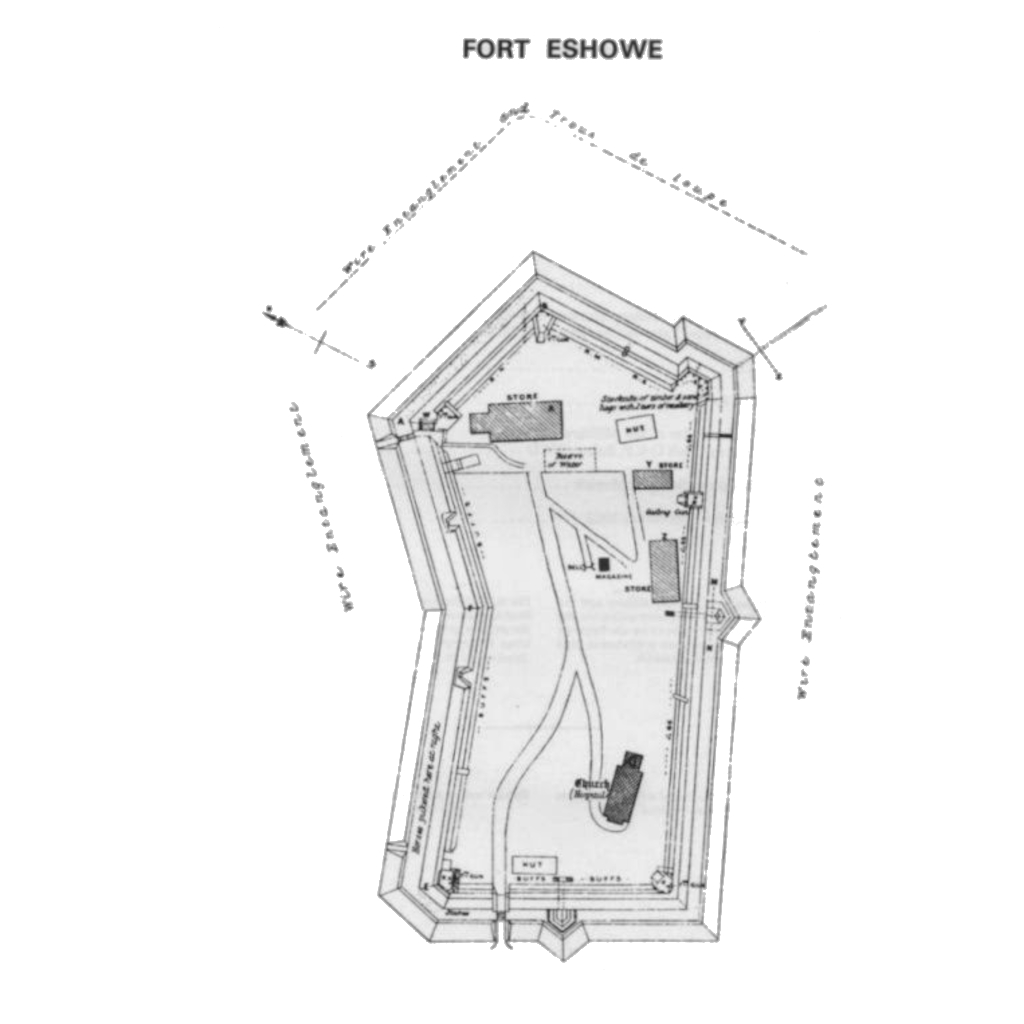The Siege of Eshowe occurred during the Anglo-Zulu War from 22nd January to 3rd April 1879. It was part of a three-pronged British invasion of Zululand, aimed at defeating the Zulu Kingdom under King Cetshwayo.
Colonel Charles Pearson led the No. 1 Column of the British invasion force, tasked with establishing an advanced base at Eshowe (also known as Fort Ekowe or kwaMondi). The British crossed the Tugela River into Zululand on 12th January, 1879, and reached Eshowe without opposition until 22nd January, when they encountered a Zulu force attempting to block their path.
The British troops entrenched themselves at Eshowe and prepared for a siege. Over the next two months, the Zulu forces, led by Dabulamanzi kaMpande, besieged the British position. The British defenders, numbering around 1,700 men, faced constant harassment and skirmishes from the Zulu warriors.
Despite the challenging conditions and limited supplies, the British managed to hold out until 28th March 1879, when a relief column under General Garnet Wolseley arrived to break the siege. The relief force, consisting of 5,670 men, fought its way through Zulu territory to reach Eshowe. The combined British forces then launched a successful counter-attack, driving the Zulu forces away and securing the fort.
The Siege of Eshowe was a significant event in the Anglo-Zulu War, demonstrating the resilience and determination of the British forces. It also highlighted the challenges faced by both sides in the conflict and the brutal nature of the war.
Orders of Battle
British Orders of Battle
- British Commander-in-chief
- Lieutenant General Lord Chelmsford Relief Column for Eshowe
- 1st Brigade, under the command of Lieutenant Colonel F.T.A. Law
- Naval Brigade Artillery from HMS Shah and HMS Tenedos
- 2 x 9 pounder guns and limbers
- 2 x 24 pounder rocket tubes
- 1 x Gatling gun and limber
- Naval Brigade’s contingents from HMS Shah and HMS Tenedos
- 91st (Princess Louise’s Argyllshire Highlanders) Regiment of Foot
- 2 x Companies 2nd/3rd East Kent (The Buffs) Regiment of Foot
- 5 x Companies 99th (Duke of Edinburgh’s Lanarkshire) Regiment of Foot
- 4th Battalion, Natal Native Contingent
- 2nd Brigade, under the command of Lieutenant Colonel W.L. Pemberton
- Naval Brigade Artillery from HMS Boadicea
- 2 x 24 pounder rocket tubes
- 2 x Gatling gun and limber
- Naval Brigade Contingent from HMS Boadicea, detachments of Royal Marines from HMS Boadicea and HMS Shah
- 57th (West Middlesex) Regiment of Foot
- 6 x Companies 3rd/60th (The King’s Royal Rifle Corps) Regiment of Foot
- 5th Battalion, Natal Native Contingent
- Divisional Troops, under the command of Major P.H.S. Barrow
- Jantzi Native Horse
- Mafunzi’s Mounted Natives
- No. 1 Troop Natal horse
- Natal Volunteer Guides
- Native Foot Scouts
Zulu Orders of Battle
- Zulu Commander-in-chief
- Somopho kaZikhala
- Phalane kaMdinwa
- Mbilwane kaMahlanganisa
- Masegwane kaSopigwasi
- Sigcwelecwele KaMhlekehleke
- Prince Dabulamanzi kaMapande
- Mavumengwana
- uVe
- umHlanga
- uMbonambi
- umCijo
- inGobamakhosi
- uNokhenke
- uThulwana
Download This Scenario
How it Played
Sources
Other blog categories that may be of interest. 10mm ACW Project, 10mm AWI Project, 10mm AZW Project, 10mm CGW Project, 10mm FIW Project, 10mm Sci-Fi Projects, Aliens, Dropzone Commander, Terra Nova, 10mm WWI Project, 10mm WWII Project, 10mm Zombie Project, Battle Reports & Scenarios, Making Scenery & Terrain, Painting Guides, Shows & Events, Solo Wargaming, Wargaming Projects, Wargaming Rules.


Leave a Reply